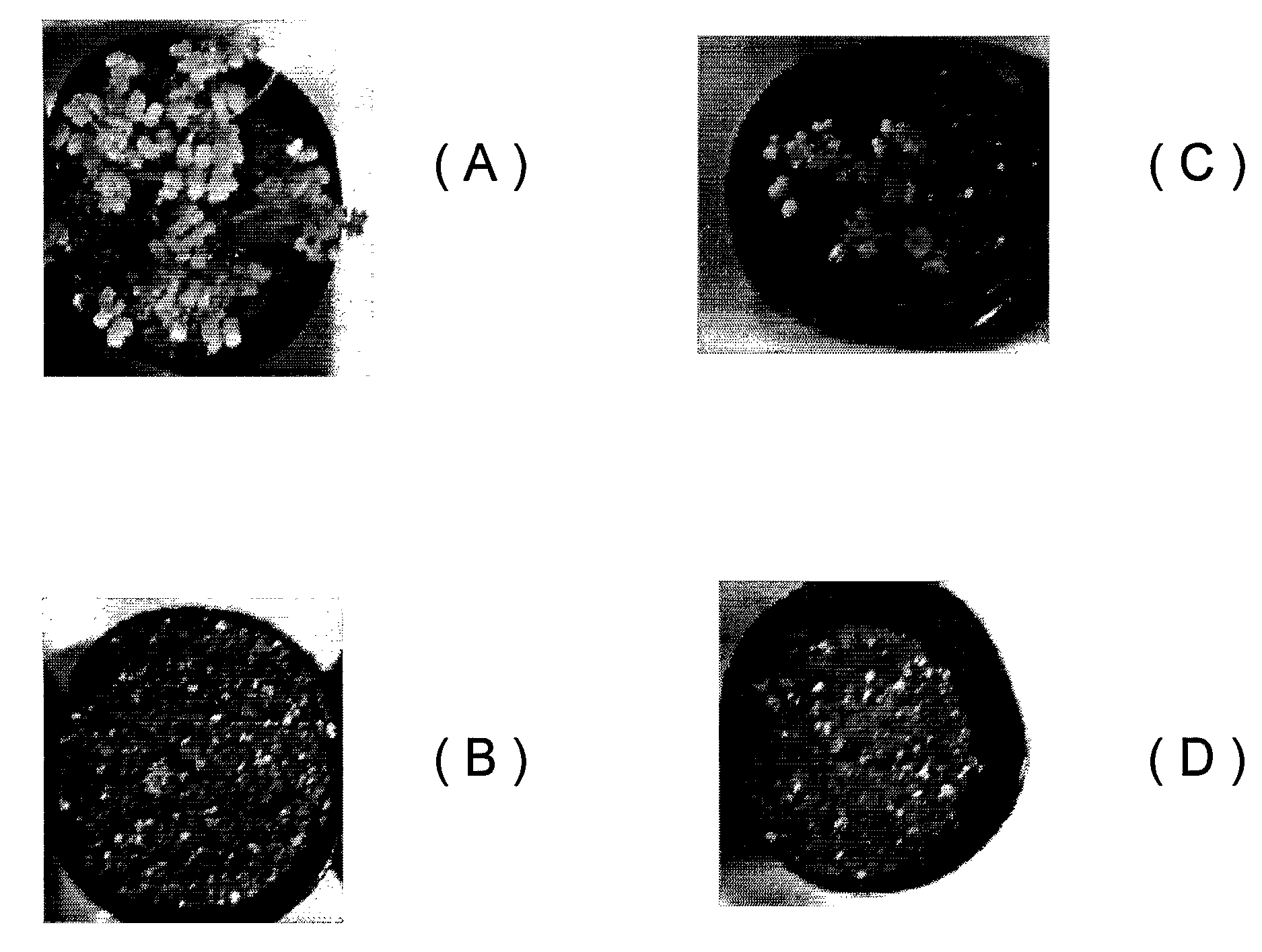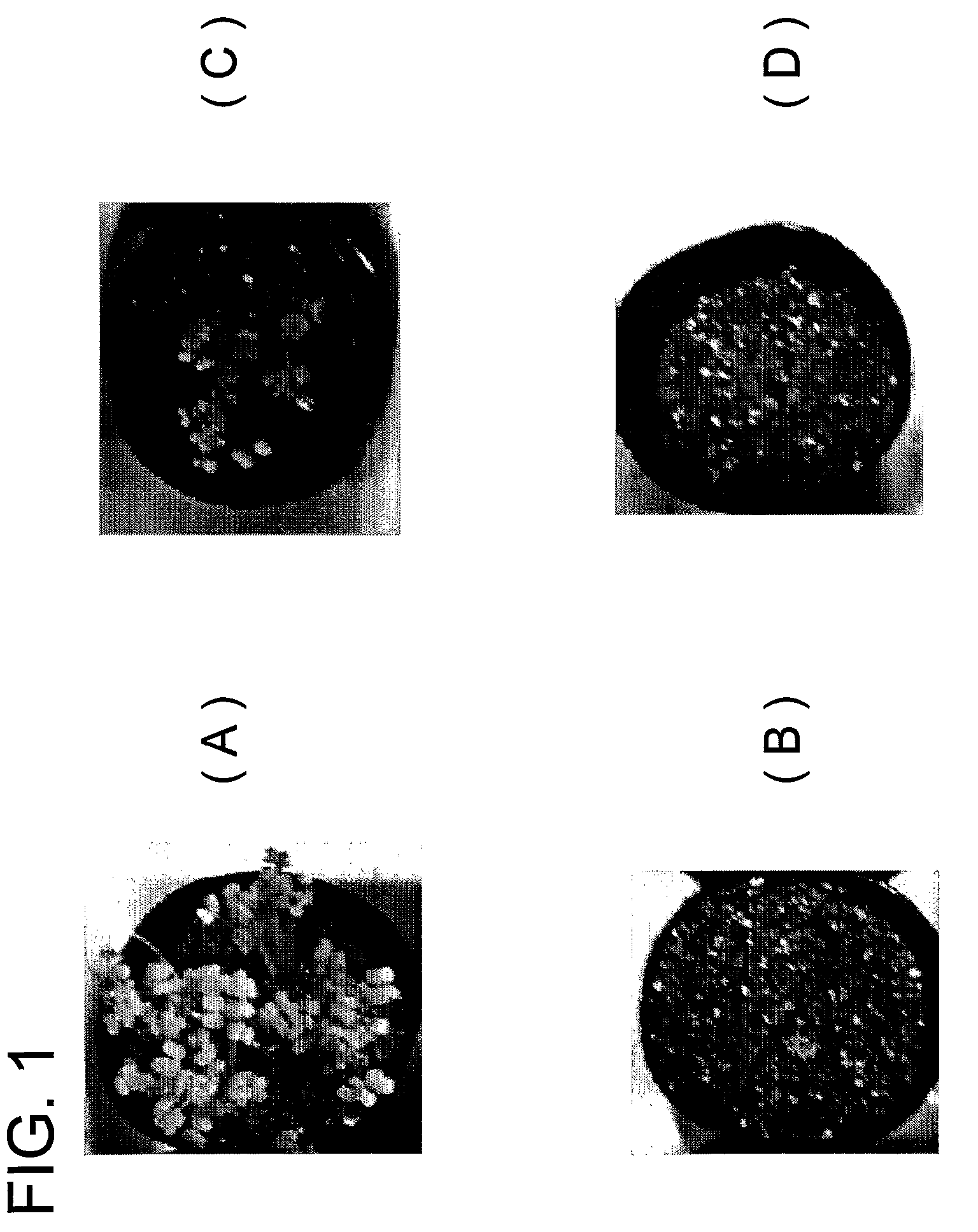Particulate water retaining material for cultivating plant having water absorbent resin as main component
a technology resin, which is applied in the field of water retaining material for cultivating plants, can solve the problems of insufficient irrigation frequency and water retention effect, adverse effects on plant growth, and inability to use for growing plants, etc., and achieves high saturated absorption capacity, high water absorbing speed, and promotes the rhizogenesis of plants.
- Summary
- Abstract
- Description
- Claims
- Application Information
AI Technical Summary
Benefits of technology
Problems solved by technology
Method used
Image
Examples
referential example 1
[0135]A reaction solution was obtained by dissolving 12.0 g of polyethylene glycol diacrylate (average addition mol number of ethylene oxide 8) in 5500 g of an aqueous solution of a monomer formed of 20 mol % of acrylic acid and 80 mol % of sodium acrylate. Then, this reaction solution was deaerated under the atmosphere of nitrogen gas for 30 minutes. Subsequently, the reaction solution mentioned above was supplied to a reaction vessel formed by furnishing a stainless steel twin arm type kneader furnished with a jacket having an inner volume of 10 L and possessing two sigma type vanes and the reaction system was displaced with nitrogen gas with the reaction solution kept at 30° C. When the reaction solution was continuously stirred and 2.46 g of sodium persulfate and 0.10 g of L-ascorbic acid were added to the stirred reaction solution, the system began polymerizing in about one minutes. Within 60 minutes of starting the polymerization, the hydrated gel-like polymer was extracted. T...
referential example 2
[0136]An amorphous crushed water absorbent resin (2) was obtained by following the procedure of Referential Example 1 while changing the monomer in the aqueous solution of monomer to a monomer formed of 30 mol % of acrylic acid and 70 mol % of sodium acrylate (monomer concentration 38 wt. %).
referential example 3
[0137]An amorphous crushed water absorbent resin (3) was obtained by following the procedure of Referential Example 1 while changing the monomer in the aqueous solution of monomer to a monomer formed of 60 mol % of acrylic acid and 40 mol % of sodium acrylate (monomer concentration 38 wt. %).
PUM
| Property | Measurement | Unit |
|---|---|---|
| weight average particle diameter | aaaaa | aaaaa |
| temperature | aaaaa | aaaaa |
| temperature | aaaaa | aaaaa |
Abstract
Description
Claims
Application Information
 Login to View More
Login to View More - R&D
- Intellectual Property
- Life Sciences
- Materials
- Tech Scout
- Unparalleled Data Quality
- Higher Quality Content
- 60% Fewer Hallucinations
Browse by: Latest US Patents, China's latest patents, Technical Efficacy Thesaurus, Application Domain, Technology Topic, Popular Technical Reports.
© 2025 PatSnap. All rights reserved.Legal|Privacy policy|Modern Slavery Act Transparency Statement|Sitemap|About US| Contact US: help@patsnap.com



